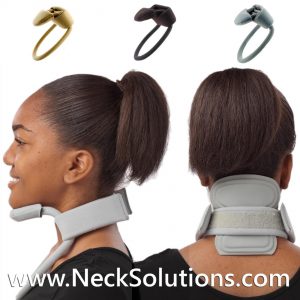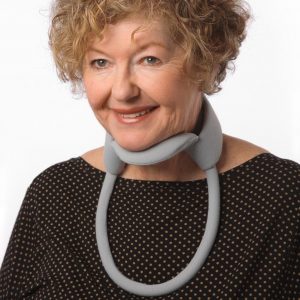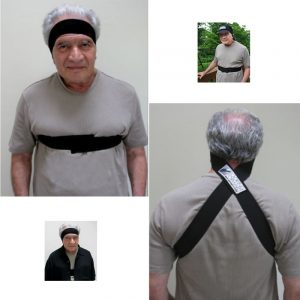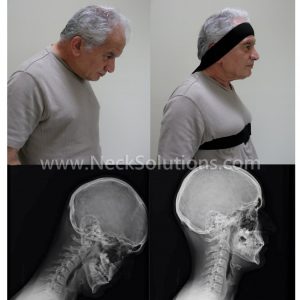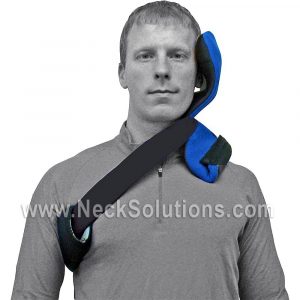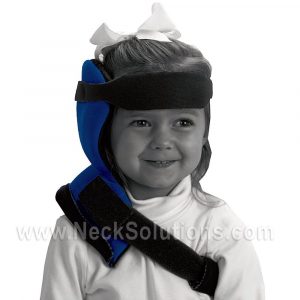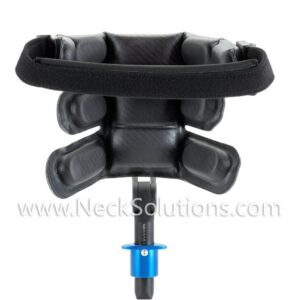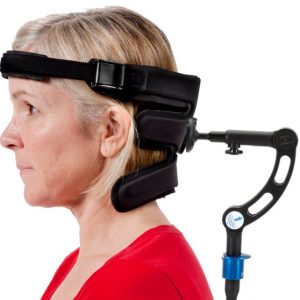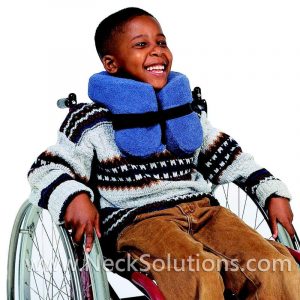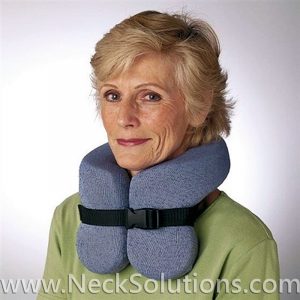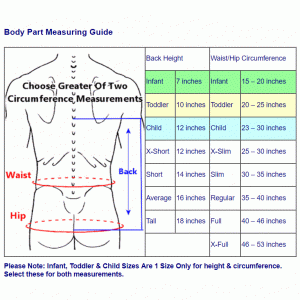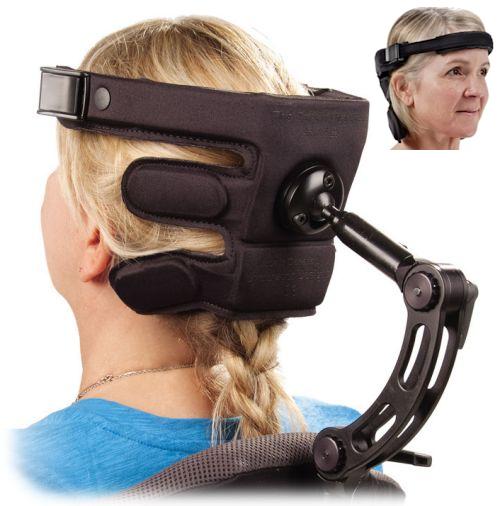Head Supports – Devices Designed To Support The Head & Improve Quality Of Life
There are many reasons head supports can be life changing. Those who suffer from diseases that effect the neck muscles like ALS, Parkinsons, Muscular Dystrophy, as well as conditions resulting from brain trauma, radiation therapy and even cases of whiplash and advanced degenerative spinal conditions often require a support that can assist holding the head up. This can be a matter of comfort and relief of pain, or being able to perform daily activities, as well as important support for breathing and eating.
Types Of Head Supports
The type of head support depends on the condition; it’s severity and how it effects your life. Supports most often are used for drop head syndrome, where the head falls forward. While many are simply supportive, some are more complex and use a restorative or neurorestorative function for correction where possible.
Most of these supports require modification or customization, such as heat molding, bending by hand or cutting pieces. It is recommended to work with your therapist in measuring and modifying the supports. Correct measurement is vital for the best fit and function.
The Headmaster Collar is an example of a support that can be modified simply by hand bending and molding for best fit. The chest piece can be bent to accommodate the clavicle bones, alleviating pressure. Accessories are used to modify function for added support in extension and side bending. The collar has a natural spring to it for better comfort and function when eating and speaking. For those requiring stronger drop head support, a piece may be added to the front, strengthening the collar. This comes at a price as it greatly stiffens the collar, negating the natural spring function. However, this is sometimes necessary to get the degree of support required to hold the head up.
The head support system and torticollis brace are neurorestorative devices, meant to be heat molded and ranged over a period of time for correction. These may also be used for standard support as well, but have special parameters best assessed by an Occupational Therapist. It comes in two versions of the TLSO based on level of support.
They secure around the torso or chest area, while the special molded piece contacts or supports the head. This has the greatest number of configurations for the widest range of conditions requiring head support. As with torticollis or head drop, you start by heat molding the unit for slight support and gradually, over a period of time, adjust by heat molding to range the head back to normal. The special spring technology works with the nervous system for correction and is considered a restorative medical product.
The Tot Collar is used to provide a noxious stimulus to range away from the side of torticollis. This also works with the nervous system for correction, rather than just support. Individual struts can be cut to specific lengths for the perfect fit. This changes as the condition changes. The collar needs to be cut for the best fit as well as customizing the struts. This is a favorite of therapists for use in children with congenital torticollis, and many find that patience and persistence result in improvement and even complete correction. It is also available in an Adult size as well, nut it must be remembered it is more restorative than supportive.
For those who are either confined or spend much of the time in a wheelchair, the Savant provides excellent support for both adults and children. It has moldable side pieces as well as a headband support with gel pads for extra comfort. Combining this with an appropriate hardware mounting system is essential, and many versions are available that mount directly to the headrest. There is even an adapter for soft back wheelchairs, making it a versatile system for any wheelchair. It is one of the most unique and supportive headrest systems available. It can also be paired with the Axion Rotary mount for additional head control in rotation.
Head supports can also be used to assist in supporting the head when working to help reduce fatigue, chronic pain and injury for those working overhead, like painters, mechanics, carpenters and more. This also extends to those in whom recreational activities require excessive head extension like bird watching or mountain climbing. This is something that is usually not thought about much, but is part of what is called a repetitive injury, like carpal tunnel syndrome. The Neck Guard is a support that serves this function.
Head Supports – Give & Take
The main focus has been on supports that provide options for direct head control, especially drop head syndrome from disease and injury, as well as support/treatment for congenital muscular torticollis and spasmodic torticollis. These supports are often required for serious conditions like ALS and other neurological conditions where head control is a main issue or even life threatening.
There is always a compromise between support and comfort. For example, a special anterior support accessory may be necessary for the Headmaster Collar in order to prevent head drop in severe cases. While this helps to provide more rigid support, it decreases the natural spring to the collar, making it less comfortable. The body brace for the head support system may need to be tight for more severe cases, which will increase support, but decrease comfort and must be considered where breathing is an issue.
The Band & Cap System may need to be ranged more tightly around the chest, but is a thin band. For those who have a difficult time with support under the chin, this and the Head Supports System offers great solutions, however, pressure across the forehead in flexion support can be an issue with some. Issues like jaw problems or chest problems must be addressed in making a sound decision. Sometimes, it is a combination of supports that provides the best solutions. So, for best results, always get recommendations and discuss with your doctor and/or therapist for your best head supports solutions.
Dropped Head Syndrome: A Common Need For Head Supports
Dropped head syndrome, sometimes called head drop head or ptosis is often due to severe weakness of the neck muscles, damage caused by radiation fibrosis, muscle degeneration and other conditions. It can also result from an increase in muscle tone of the neck flexion muscles. In severe cases, this can result in a chin on chest deformity restricting ability to look straight ahead. Often, this is not a fixed condition and may be corrected by lying on the back, having someone passively range the head back for a few minutes or by using various head support devices. It can be seen isolated or associated with a various general neuromuscular disorders and neck radiotherapy for malignancies.
It is usually seen isolated from a myelopathy involving the spinal cord or myopathy in the elderly and can result from severe degenerative disease of the cervical spine. It is sometimes called isolated neck extensor myopathy (pathology of the muscles) when seen in absence of a general neuromuscular disorder. Moreover, dropped head syndrome can gradually aggravate preexisting degenerative changes or cause these changes in the cervical spine and may result in myelopathy. Dropped head syndrome can increase the risk of falls due to an inability to see correctly when walking, therefore, head support can be an important part of management, increasing quality of life.
There are many conditions that have been associated with dropped head syndrome. Neuromuscular diseases, such as myasthenia gravis, congenital myopathy, motor neuron disease, mitochondriopathy, and chronic inflammatory demyelinating polyneuropathy. Some are systemic and progressive, with a grave prognosis, like ALS (amyotrophic lateral sclerosis), while others may have a more benign clinical course as indicated for the isolated type.
Conditions Associated With Dropped Head Syndrome
| Condition Type | Diagnosis | |
|---|---|---|
| Neurological | Cervical myelopathy | |
| Amyotrophic lateral sclerosis | ||
| Tardive dyskinesia | ||
| Cervical dystonia | ||
| Postpolio syndrome | ||
| Parkinson disease | ||
| Chronic inflammatory polyneuropathy | ||
| Multiple system atrophy | ||
| Neuromuscular | Lambert-Eaton myasthenic syndrome | |
| Myasthenia gravis | ||
| Muscular | Primary Inflammatory | Scleromyositis |
| Polymyositis | ||
| Isolated inflammatory axial myopathy | ||
| Primary Noninflammatory | Mitochondrial myopathy | |
| Inclusion body myopathy | ||
| Isolated neck extensor myopathy | ||
| Congenital myopathy | ||
| Fascioscapulohumeral dystrophy | ||
| Nemaline myopathy | ||
| Secondary | Hypothyroidism | |
| Postradiation neck extensor myopathy | ||
| Postbotulinum toxin injection | ||
| Anterior scar contracture | ||
| Carnitine deficiency | ||
| Cushing syndrome | ||
| Hyperparathyroidism | ||
| Hypokalemia | ||
| Other | Postsurgical | |
| Malignancy | ||
As indicated above, conditions associated with dropped head syndrome are placed into categories of muscular, neurological, neuromuscular and other. Head supports are used in order to improve quality of life, ambulation restrictions, daily living activities, as well as social interactions.

- A 2020 study in BMC Musculoskeletal Disorders found that spinopelvic alignment had significant effects on outcomes for surgery related drop head cases. Therefore it is important to have a professional evaluate a patient in the decision, measurement and fitting for a support. The need for a thoraco-lumbar support or collar type in ambulatory patients depends on many factors including global postural needs.
- A 2021 study in Scientific Reports found that sarcopenia (loss of muscle mass) in the trunk muscles was related to the head dropping forward without specific diagnosis as the cause. This would favor a support system as opposed to a collar type support and rehabilitation beyond the cervical extensors.


